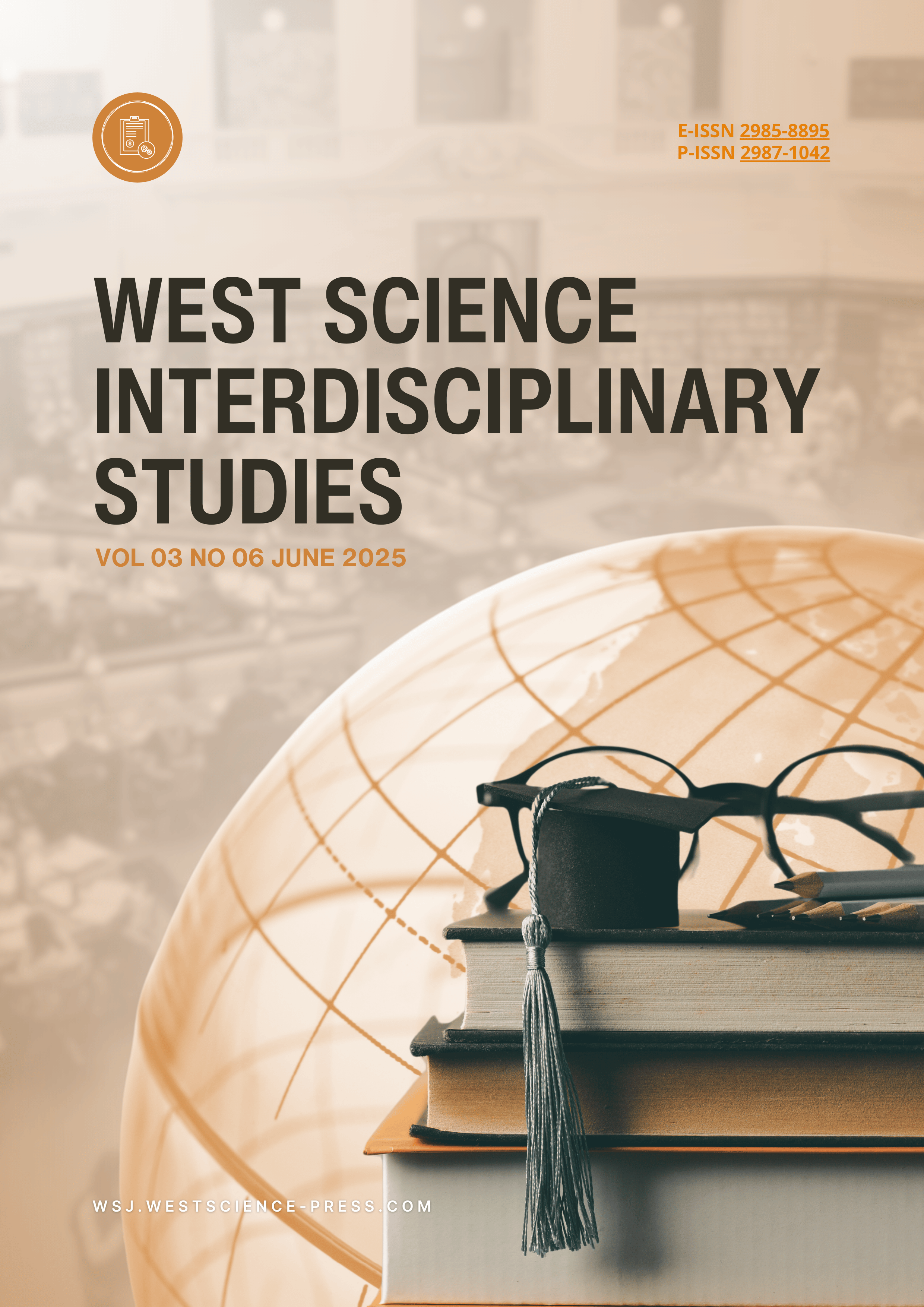Palm Oil and Biodiversity: Mapping the Research Landscape using Bibliometric Methods
DOI:
https://doi.org/10.58812/wsis.v3i06.2024Keywords:
Palm Oil, Biodiversity, Bibliometric Analysis, VOSviewer, ScopusAbstract
The rapid expansion of palm oil production has triggered widespread concerns over its impact on global biodiversity, particularly in tropical regions rich in endemic species. This study employs a bibliometric analysis using data exclusively from the Scopus database and visualization through VOSviewer to map the scientific research landscape on palm oil and biodiversity between 2004 and 2024. A total of 980 documents were analyzed to identify key publication trends, influential authors, institutions, countries, and thematic clusters. The findings reveal a significant increase in research output over the past two decades, with a peak in 2019, reflecting growing academic and policy interest in environmental sustainability. Indonesia, Malaysia, and the United Kingdom emerged as the most productive and collaborative countries, while institutions such as IPB University and Universiti Putra Malaysia were identified as central contributors. Keyword co-occurrence and overlay visualizations indicate a thematic shift from ecological impact studies—such as species richness and deforestation—to broader sustainability concerns, including climate change, land use, and conservation policy. The study also highlights research gaps in geographic representation, underexplored taxa, and socio-political dimensions. These insights offer a foundation for guiding future interdisciplinary research and promoting more effective biodiversity conservation strategies in the context of palm oil production.
References
[1] E. B. Fitzherbert et al., “How will oil palm expansion affect biodiversity?,” Trends Ecol. Evol., vol. 23, no. 10, pp. 538–545, 2008.
[2] S. Savilaakso et al., “Systematic review of effects on biodiversity from oil palm production,” Environ. Evid., vol. 3, pp. 1–21, 2014.
[3] B. Yaap, M. J. Struebig, G. Paoli, and K. L. Koh LianPin, “Mitigating the biodiversity impacts of oil palm development.,” CABI Rev., no. 2010, pp. 1–11, 2011.
[4] E. C. Turner, J. L. Snaddon, T. M. Fayle, and W. A. Foster, “Oil palm research in context: identifying the need for biodiversity assessment,” PLoS One, vol. 3, no. 2, p. e1572, 2008.
[5] N. Donthu, S. Kumar, D. Mukherjee, N. Pandey, and W. M. Lim, “How to conduct a bibliometric analysis: An overview and guidelines,” J. Bus. Res., vol. 133, pp. 285–296, 2021.
[6] K. Sakai, M. A. Hassan, C. S. Vairappan, and Y. Shirai, “Promotion of a green economy with the palm oil industry for biodiversity conservation: A touchstone toward a sustainable bioindustry,” J. Biosci. Bioeng., vol. 133, no. 5, pp. 414–424, 2022.
[7] L. E. P. Vargas, W. F. Laurance, G. R. Clements, and W. Edwards, “The impacts of oil palm agriculture on Colombia’s biodiversity: what we know and still need to know,” Trop. Conserv. Sci., vol. 8, no. 3, pp. 828–845, 2015.
[8] K. Nicholas, J. Fanzo, and K. MacManus, “Palm oil in Myanmar: a spatiotemporal analysis of the effects of industrial farming on biodiversity loss,” Glob. Heal. Sci. Pract., vol. 6, no. 1, pp. 210–222, 2018.
[9] J. J. Gilroy et al., “Minimizing the biodiversity impact of Neotropical oil palm development,” Glob. Chang. Biol., vol. 21, no. 4, pp. 1531–1540, 2015.
[10] L. P. Koh and D. S. Wilcove, “Is oil palm agriculture really destroying tropical biodiversity?,” Conserv. Lett., vol. 1, no. 2, pp. 60–64, 2008.
[11] S. Dhandapani, “Biodiversity loss associated with oil palm plantations in Malaysia: Serving the need versus saving the nature,” in Conference: Crops for the future, 2014.
[12] B. Azhar et al., “Promoting landscape heterogeneity to improve the biodiversity benefits of certified palm oil production: Evidence from Peninsular Malaysia,” Glob. Ecol. Conserv., vol. 3, pp. 553–561, 2015.
[13] J. Mathews, K. K. Yong, and B. E. Nurulnahar, “Preliminary investigation on biodiversity and its ecosystem in oil palm plantation,” in International Palm Oil Congress, 2007, pp. 1112–1158.
[14] S. Andriyanningsih, I. Z. Siregar, and S. D. Tarigan, “Biodiversity and ecosystem functioning in palm oil landscapes: a systematic literature review,” in IOP Conference Series: Earth and Environmental Science, IOP Publishing, 2024, p. 12006.
[15] S. Fleiss et al., “Implications of zero-deforestation palm oil for tropical grassy and dry forest biodiversity,” Nat. Ecol. Evol., vol. 7, no. 2, pp. 250–263, 2023.
[16] L. M. Ayompe, R. N. Nkongho, C. Masso, and B. N. Egoh, “Does investment in palm oil trade alleviate smallholders from poverty in Africa? Investigating profitability from a biodiversity hotspot, Cameroon,” PLoS One, vol. 16, no. 9, p. e0256498, 2021.
[17] W. A. Foster et al., “Establishing the evidence base for maintaining biodiversity and ecosystem function in the oil palm landscapes of South East Asia,” Philos. Trans. R. Soc. B Biol. Sci., vol. 366, no. 1582, pp. 3277–3291, 2011.
Downloads
Published
Issue
Section
License
Copyright (c) 2025 Loso Judijanto

This work is licensed under a Creative Commons Attribution-ShareAlike 4.0 International License.
























 Instagram
Instagram 